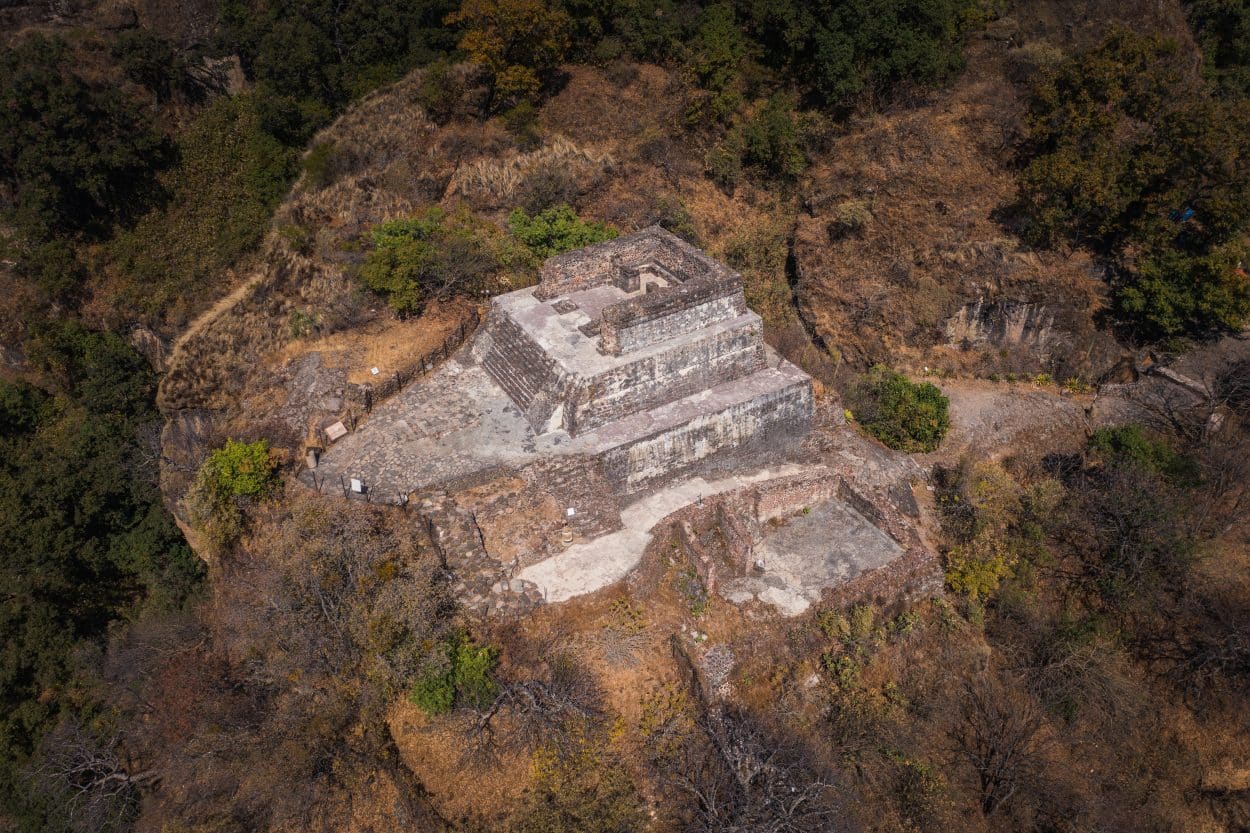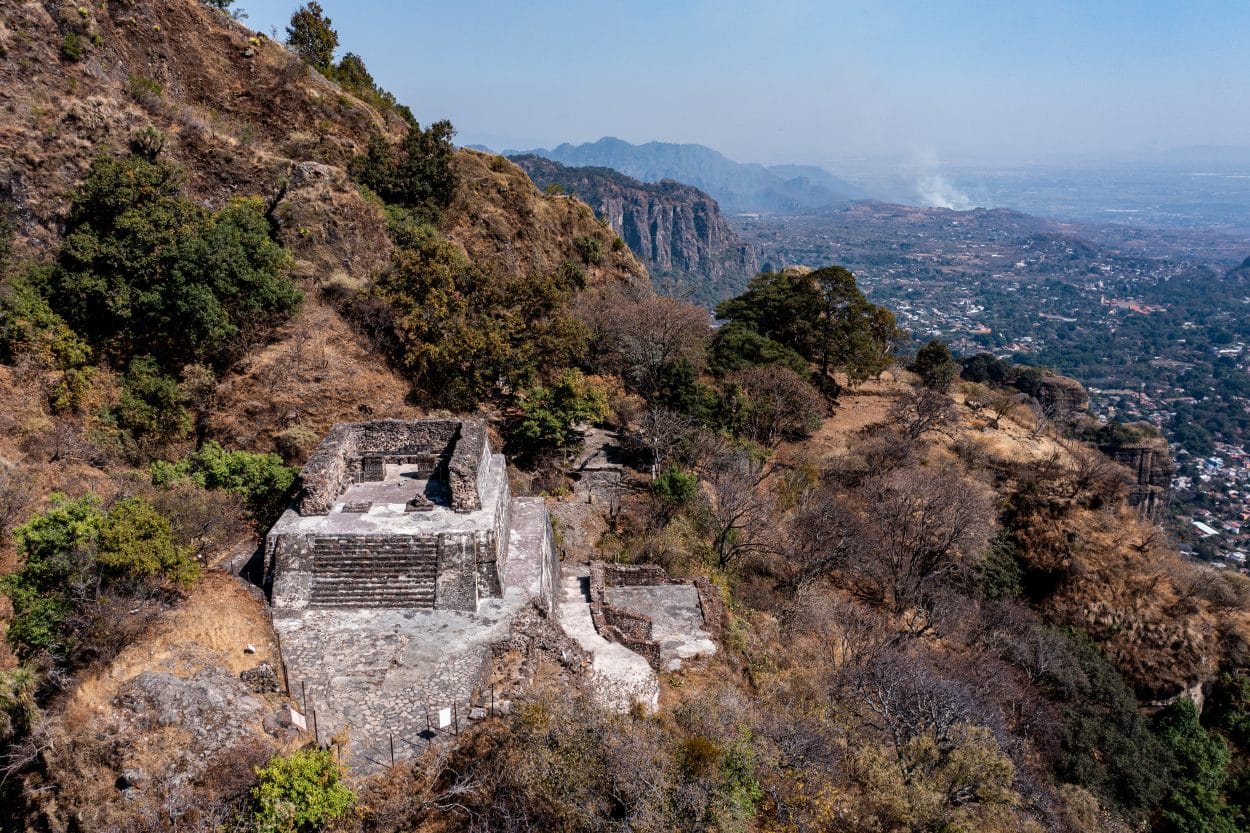El Tepozteco is a remote Aztec temple, built on one of the peaks of the Sierra de Tepoztlan in Morelos, Mexico.
The temple is dedicated to Ometochtli-Tepoztēcatl, an Aztec god associated with fertility, drunkenness, and the alcoholic beverage pulque. According to Aztec myth, Tepoztēcatl was one of the Centzon Tōtōchtin, a group of divine rabbits who met for frequent drunken parties.
El Tepozteco is situated on a mountain peak at 2,310 metres above sea level (7,579 feet) overlooking Tepoztlán, the birthplace of Ce Acatl, later known as Topiltzin Ce Acatl Quetzalcoatl. The temple emerged as a major cult centre for Tepoztēcatl, attracting pilgrims from across the Aztec world.

The site consists of a 6.4-meter-high platform supporting a 3.3-meter-high temple base. The main temple structure now stands at 2.7 metres and originally contained two rooms where a sculpture of Tepoztecatl was placed for religious ceremonies.
Dwellings were built on a series of terraces on the eastern side of the site in order to house priests and staff for maintaining the temple.
Excavations at El Tepozteco have identified a glyph that mentions the Aztec Emperor Ahuizotl, the eighth Aztec ruler and the Huey Tlatoani of the city of Tenochtitlan. Another glyph mentions the calendrical date “10 rabbit” which represents the year AD 1502, possibly indicating when the temple complex was first constructed or to commemorate the death of Ahuizotl.

Other glyphs include a turquoise crown and a shield with arrows, suggesting that the parts of the temple were built during the period of the Triple Alliance (an alliance between the Nahua altepetl city-states: Mexico-Tenochtitlan, Tetzcoco, and Tlacopan) sometime after AD 1452, the year when the Alliance conquered Tepoztlan.
El Tepozteco was abandoned sometime during the Spanish conquest (AD 1519–21), most likely when Tepoztlán was attacked and burnt to the ground by soldiers under the command of Hernán Cortés.
Header Image Credit : Alejandro Medina – Shutterstock





